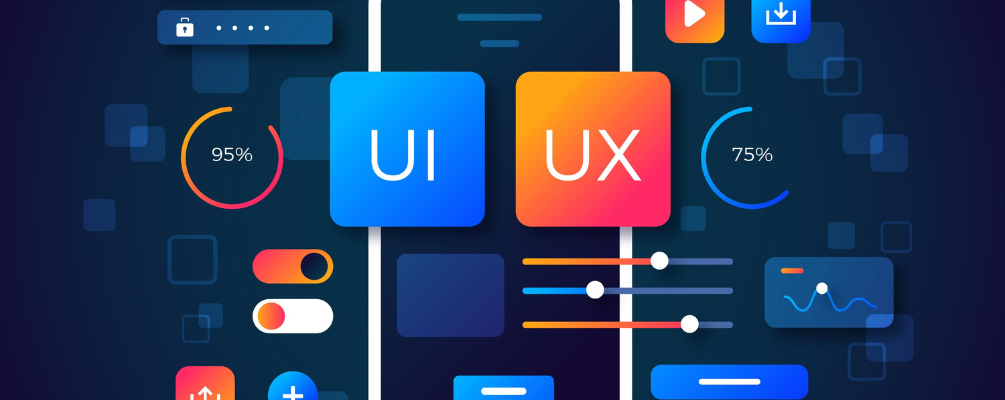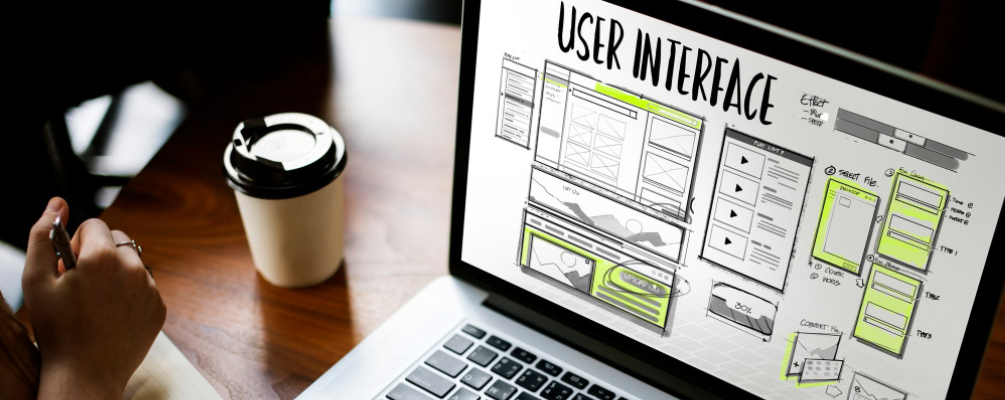> Articles > What is the Difference Between UI & UX Design?

What is the Difference Between UI and UX Design?
Understanding the difference between User Interface (UI) and User Experience (UX) is important for digital product design. UI and UX design are responsible for a product’s successful deployment. UI design caters to the look and feel of the product, while UX design enhances the product’s functionality and user experience. Knowing about their differences can help a business create products aimed primarily at customer satisfaction and accessibility.
What Is UX Design?
User Experience is the integrated design of a product that shapes how users interact with and perceive a company’s brand. It focuses on enhancing user experience by ensuring the digital product offers an enjoyable and smooth experience.
What Is UI Design?
User Interface refers to the visual elements of a website or a mobile application. It uses screens, buttons, and icons that a user generally sees when using the product or landing on a website. Its main objective is to build an attractive layout that offers users an intuitive and visually appealing experience.

UX and UI Design – Key Differences
Although they work interchangeably, UX and UI serve different purposes. Knowing about their differences is important for businesses that are planning to invest in product design.
Look vs. Feel
UI and UX are interlinked during product development. UI design focuses on making the product visually appealing to users through elements like colors, fonts, and layout. Conversely, UX design ensures the overall user experience and accessibility of the product. UX design also ensures the product operates smoothly during user interactions.
Design vs. Prototyping
Although UX or UI designs are used together on a project, their objectives and roles differ greatly. UX designs generally establish the groundwork, focusing on creating wireframes and testable prototypes. This forms the foundation for a service or website’s user journey. On the contrary, UI designs are more inclined toward refining and perfecting the visual elements and designs, which boosts user engagement in the final product.
High-Level vs. Details
Another major difference between UX and UI designs is the depth or level of work involved in each. UI designs aim to carefully refine the individual buttons, pages, and interactions to ensure they are visually captivating and completely functional. Conversely, UX designs take a holistic approach, focusing on the extensive user journey of the service, website, or app, aiming to bring a consistent user experience across the entire product.
Features and Functions
UX designs focus more on the features that are added to the product or the way users reach them. On the contrary, UI designs focus on how the features function, such as the way they appear and the interactions required. The UI design lays out the page and implements the fonts and colors to make the product more interactive.
Responsive Design
A dedicated app or responsive web design has paved the path for numerous products and services that are responsive across different devices. From a UX perspective, responsive design ensures the users have a consistent experience across devices. For example, a menu that pulls down at the top-right end of the screen indicates that the users are efficiently navigating through the page.
The UI focuses more on ensuring the website elements resize appropriately across different screen sizes. Images, videos, and page layouts need to transition based on the device. Therefore, UI design techniques include image optimization and responsive embeds, ensuring that the pages are easier to navigate.

Outcome and Objectives
The result of the UI design is a visually captivating interface that engages users while enhancing their interaction with the product. UI designs often aim to create an accessible product, ensuring that every visual element contributes to offering the perfect user experience.
The UX design aims to ensure that users interact smoothly with the product and achieve every goal without any issues. An appropriately executed UX design often leads to the product meeting the user’s needs, which results in the best user satisfaction and retention. UX ensures better product functionality, which optimizes the users experience.
Conclusion
In the realm of digital design, both UI and UX play a significant role, each with a purpose and rhythm. Although UX maps out the entire journey and ensures that it is smooth and user-focused, UI helps with the visual elements, boosting and engagement. In collaboration with one another, they form the real backbone of memorable digital experiences. This mix is important to create the best digital products that resonate with users.
Frequently Asked Questions
1. Which one is more important: UI or UX?
Neither is better than the other. UI makes the product visually appealing, and UX makes it easier to use. What is important, though, is the balance between both. Ultimately, any product should present functionality alongside aesthetic appeal.
2. How do UI and UX designers collaborate?
UI and UX designers collaborate closely from start to finish. UX designers design the structure and user flow, and UI designers take that structure and translate it into a visually pleasing interface that works seamlessly in collaboration with the other elements.
3. Can a single designer handle both UI and UX?
UI and UX designers often have different skill sets. UX designers design the structure and user flow, and UI designers take that structure and translate it into a pleasing interface that works seamlessly in collaboration with the other elements.
Contact us today and learn more about how SlickDigital can help you design a visually striking UI and intuitive UX to enhance your product.
Latest Posts
-
 10 Jun 2025 Company NewsPress Release: SlickDigital Joins Pivotly to Advance Custom App Development for AI-Driven Enterprises
10 Jun 2025 Company NewsPress Release: SlickDigital Joins Pivotly to Advance Custom App Development for AI-Driven Enterprises -
 21 Nov 2024 Data MigrationKey Data Migration Challenges and Effective Strategies to Overcome Them
21 Nov 2024 Data MigrationKey Data Migration Challenges and Effective Strategies to Overcome Them -
 21 Nov 2024 Blockchain DevelopmentHow to Choose the Right Blockchain Platform for Your Development Project?
21 Nov 2024 Blockchain DevelopmentHow to Choose the Right Blockchain Platform for Your Development Project? -
 21 Nov 2024 MVP DevelopmentHow to Validate Your Business Idea with MVP Development
21 Nov 2024 MVP DevelopmentHow to Validate Your Business Idea with MVP Development -
 19 Nov 2024 Staff AugmentationTop Benefits of IT Staff Augmentation for Growing Tech Teams
19 Nov 2024 Staff AugmentationTop Benefits of IT Staff Augmentation for Growing Tech Teams -
 19 Nov 2024 CloudHow Cloud Applications Affect the Future of Your Business
19 Nov 2024 CloudHow Cloud Applications Affect the Future of Your Business -
 18 Nov 2024 Application DevelopmentExplore the Best Tools for Effective Application Integration
18 Nov 2024 Application DevelopmentExplore the Best Tools for Effective Application Integration
